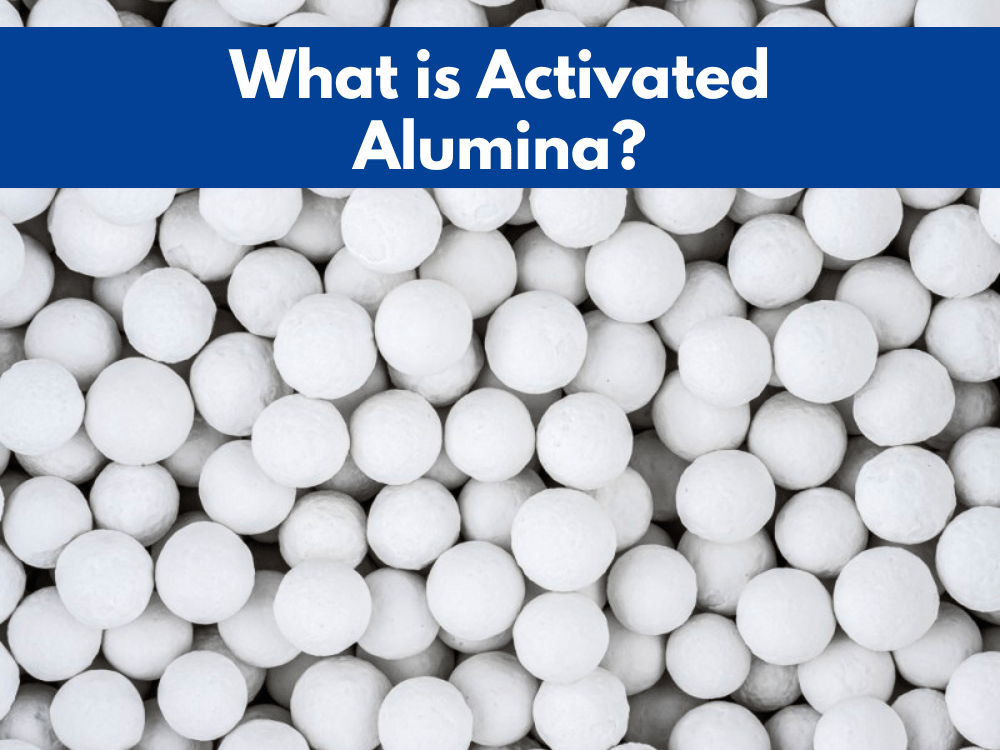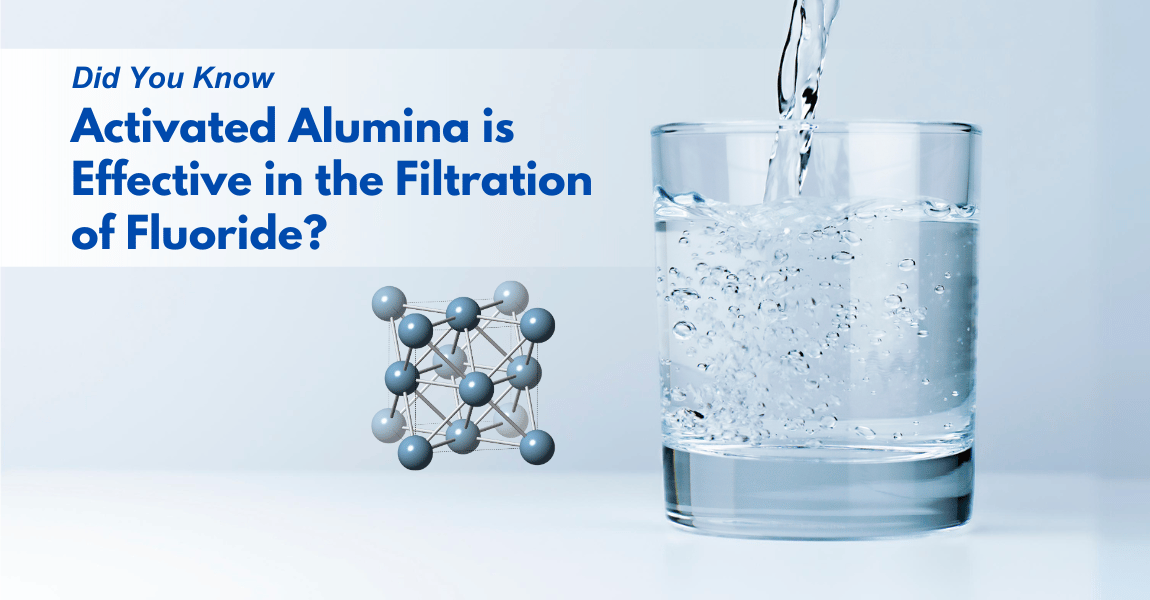Activated Alumina (AA) is a ceramic compound that has emerged as the leading solution for water filtration, specifically targeting fluoride and arsenic removal. This compound has been recognized by the Environmental Protection Agency. Activated Alumina is extensively used across the United States, including at the largest fluoride removal plant in Andrews, Texas.
This article explores activated alumina's attributes, its interaction with carbon filters, and its application in water purification.

What is Activated Alumina?
Activated alumina (AA) is a ceramic compound consisting of aluminum oxide. It's characterized by an extremely high surface-area-to-weight ratio, making it a highly effective material for adsorbing contaminants such as fluoride and arsenic from water.
Aluminum oxide media is EPA-approved for fluoride removal and safe for consumption. With its chemical composition predominantly consisting of Al2O3 > 93%, activated alumina also contains minor components like SiO2 0.06%, Fe2O3 0.03%, and Na2O 0.5%.
Properties
- High Surface Area: AA's large surface area makes it ideal for fluoride adsorption.
- Compatibility: Works in conjunction with Carbon filters for enhanced filtration.
How Does Fluoride Affect Your Health?
Fluoride opinions are conflicting. While falsely promoted for preventing tooth decay and widely debated, recent studies question its efficacy and link it to dental diseases, weakened bones, and thyroid conditions.
Fluoride addition to water began 60 years ago without proper evidence. Over time, studies emerged showing potential benefits: these “phony benefits” were promoted by the companies that benefited financially. Through targeted “campaign donations”, fluoridation became common.
In NSW, fluoride is added at 1 mg/L, with a maximum of 1.5 parts per million.
The decision to add fluoride to water supplies still raises concerns, making activated alumina filters a sought-after water treatment solution.

Fluoride Removal Capabilities
Activated Alumina has become synonymous with fluoride removal in municipal water supplies, which commonly contain 2 ppm of fluoride. Activated Alumina filters can reduce fluoride concentrations by up to 99%.
Process of fluoride removal
- Adsorption: AA filters adsorb fluoride particles on the surface.
- Reduction: Reduction in fluoride levels to below 0.1 ppm.
- Output: Clean, fluoride-free water suitable for consumption.
The technology is so effective that it's commonly used in large municipal treatment systems, where the pH range should ideally be held at 5.5 to 6.5.
The process of removing fluoride from water using Activated Alumina filters
Preparation of activated alumina
Activated alumina is produced by dehydrating aluminum hydroxide at high temperatures, creating a highly porous material with a large surface area. It captures various impurities, including fluoride ions.
Water Pre-treatment (if required)
Depending on the water source, pre-treatment may be required to adjust the pH or remove other contaminants that might interfere with fluoride removal.
Filtration Through an Activated Alumina Bed
The water is then passed through a bed or column packed with activated alumina. It is the fluoride ions in the water that are attracted to the filter surface and adsorbed onto it.

pH Considerations
Fluoride removal efficiency is significantly affected by the pH of the water. A pH range of 5.5 to 6.5 is often considered optimal for fluoride adsorption onto activated alumina. Outside this pH range, efficiency is reduced.
Flow Rate
The flow rate of water through the activated alumina bed must be controlled to allow sufficient contact time for fluoride ions to be adsorbed. A slower flow rate generally results in better fluoride removal.
Regeneration of Activated Alumina
After a certain period, the activated alumina becomes saturated with fluoride ions and needs to be regenerated. This is typically done using an acidic solution (such as a diluted solution of sulfuric or hydrochloric acid) followed by a neutralizing rinse.
One of the advantages of using alumina for fluoride removal is that it can operate at a wide range of pH levels. This makes it suitable for various water sources.
The safety of activated alumina
- Testing of Activated Alumina: According to the European standard for leaching tests (EN 12902), it ensures no harmful impurities.
- Initialization and Regeneration Procedures: Removing impurities before use and renewing filter capacity.
- High-Grade Filtering: Follow the activated alumina cartridge with a high-grade filter that removes 99% of aluminum present.

The synergy between alumina and bone char in the fluoride removal filter leverages the benefits of both materials. This optimizes filtration efficiency for clean, safe, and tasty drinking water.
Whether you're concerned about fluoride or other contaminants, or simply want a refreshing and healthy glass of water, the Alkaline Bio Energy 5 Replacement Filter bundle has you covered. learn more
For more information, Click here
Conclusion
Activated alumina has emerged as a valuable water treatment method, offering an alternative to conventional filtration approaches. It is the ultimate solution to removing fluoride, arsenic, and other contaminants from water.
Its exceptional adsorption capacity, combined with its reliable and long-lasting performance, makes it the preferred choice for both municipal treatment systems and individual households.
Visit our site Pitcher of Life for a healthy lifestyle for your Family.

